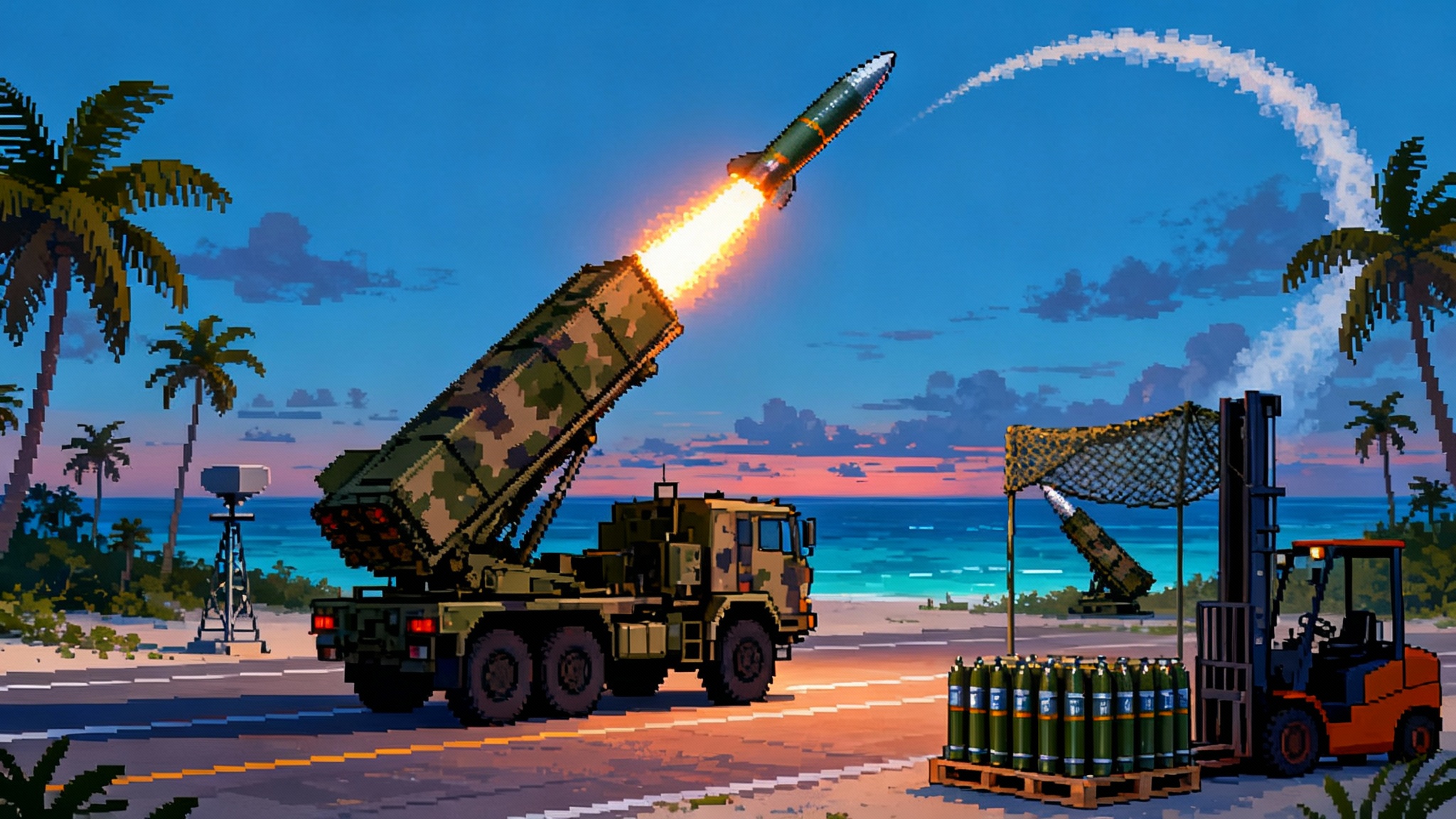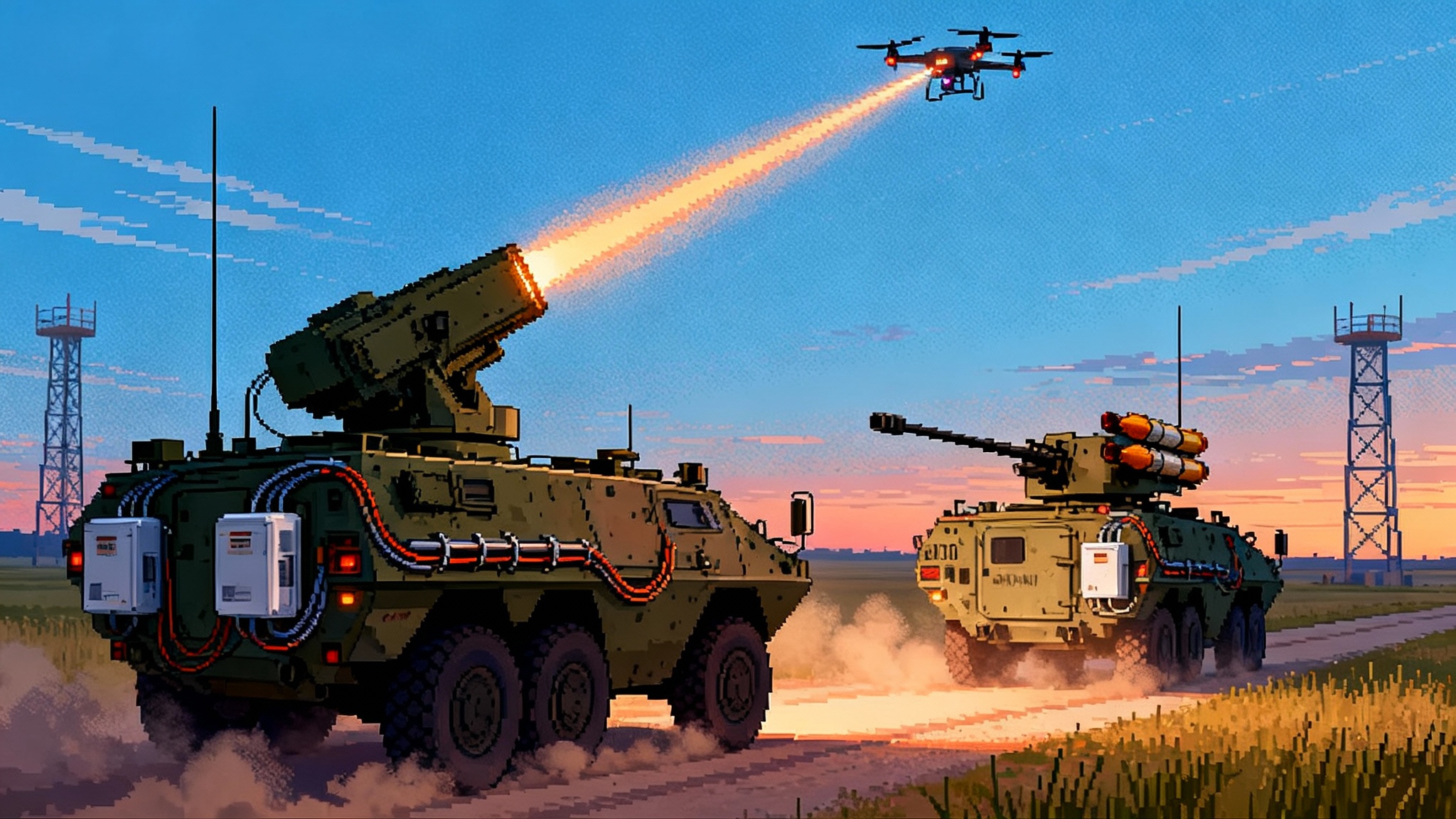TLS-BCT Manpack brings spectrum power to the platoon
With 2025 deliveries accelerating and new funding in place, the Army’s TLS BCT Manpack moves jamming and signals intelligence into line units, speeds sensor-to-shooter targeting, and plugs the tactical edge into CJADC2.

The Army’s backpack of electronic power is finally here
The United States Army’s newest backpack is not about water or rations. It is a software-defined, soldier-carried electronic warfare and signals intelligence suite that listens, finds, and fights in the radio spectrum. After a rapid acquisition sprint and an initial contract award to Mastodon Design, a CACI company, the Army began first unit issue in 2024, with 2025 deliveries accelerating across brigade combat teams. The program’s shift from prototypes to production was fast by defense standards, and it now has fresh funding to scale. The result is simple to describe and hard to overstate: the Terrestrial Layer System BCT Manpack puts real spectrum power in the hands of line units, not just specialized detachments. See the official Army announcement on Manpack fielding and award.
This is not a niche gadget. It is a sign that electronic warfare is no longer a boutique capability reserved for high headquarters or dedicated vehicles. The Manpack is designed to live with the squad, the platoon, and the company, and to be used by soldiers who are busy doing everything else that small units must do under fire.
What exactly is in the pack
At its core, the Manpack is a set of modular radios, antennas, batteries, and processors that behave like a software-defined radar detector and smart jammer rolled into one. In technical terms, it integrates electronic support (finding and identifying signals), electronic attack (jamming or deceiving those signals), and signals intelligence (collecting and exploiting communications or emissions). Because it is software-defined, new waveforms and threat profiles can be added like apps to a phone. That matters because the spectrum is crowded and adversaries constantly change how they communicate and control drones, radars, and networks.
The system is built to be tailorable. A unit can carry a lean configuration for long patrols or add modules for more power or range when mounted on a vehicle. A single rucksack can survey the local airwaves to reveal who is talking, where, and on what frequency. Multiple rucksacks networked together can triangulate an emitter more precisely. Picture two scouts on different hilltops noting the same hostile drone controller. The system fuses those bearings and paints a dot on the map. That dot is a target the fire support section can understand.
Related reading
- How directed energy is changing counter-drone fights: high power counter UAS breakout
- Air defense at the tactical edge: Strykers flip the drone math
- Space-enabled resiliency for timing and navigation: reprogrammable GPS enters the fight
How the Manpack compresses the sensor-to-shooter timeline
The most important promise of the Manpack is time. In past fights, detecting an enemy signal and turning that detection into a target for shooters could take many minutes or longer. Messages had to travel up the chain to specialists with the right tools, then back down to the units with guns or loitering munitions. Every handoff added friction.
The Manpack aims to make the detection-to-decision chain a straight line. Here is how that works in practice:
-
Detect and characterize. A team in a tree line detects a control link used by enemy quadcopters. The software classifies the waveform and confidence level and shows threat icons on a tablet.
-
Geolocate and correlate. A second Manpack in a support-by-fire position sees the same signal. The two systems share bearings over the tactical network, compute a location, and correlate with recent reports from small unmanned aircraft.
-
Package a target. The software auto-generates a target package with coordinates, threat type, and an engagement recommendation. It includes deconfliction checks to avoid interfering with friendly radios.
-
Fire or jam. The package flows directly to the company fire support element. If the commander wants non-kinetic effects, the Manpack can execute a short, surgical jamming burst to break the drone link. If the commander wants to strike, the target is already in a format that a mortar section or loitering munition can use without retyping.
Shrinking this loop is less about raw computing and more about disciplined interoperability. The Manpack is built to export machine-readable reports that plug into the Army’s evolving data fabrics and common operating pictures. That means a spectrum event seen by a rifle platoon can appear in the same operational picture used by artillery battalions or air defense batteries, without a human reformatting the data.
Plugging the tactical edge into CJADC2
Combined Joint All-Domain Command and Control, often shortened to CJADC2, is the Department of Defense effort to connect sensors and shooters across services and partners. The Manpack is one of the Army’s most tangible steps toward that vision because it lives where the fight lives. It can feed the data fabric upward and receive tasking downward.
Two Army initiatives make this practical:
-
Tactical Intelligence Targeting Access Node (TITAN). A next-generation ground station that ingests data from space, high altitude, aerial, and terrestrial sensors and uses artificial intelligence to triage what matters. TITAN prototypes are already with operational units and are being tuned to receive and act on data from systems like the Manpack.
-
Project Linchpin. The Army’s pipeline for training, validating, deploying, and updating artificial intelligence models across programs. By treating models like replaceable components and securing their supply chain, Linchpin enables software-defined systems such as the Manpack to adapt quickly to new signals or countermeasures rather than waiting on a long software release cycle.
Put simply, the Manpack turns grunts into sensor nodes for CJADC2. A platoon-level detection can ripple across the joint force. If a Patriot battery needs to know that a radar turned on, or a Navy electronic support team offshore cares about a coastal transmitter, the Manpack’s report does not need a human courier. The path is already wired.
2025 fielding pace and the money behind it
The program’s momentum shows up in two places. First, units are receiving systems at a steady clip in 2025 as the Army pushes the capability into line formations rather than waiting for specialized fielding teams. Second, the program received a significant contract modification in May 2025 to continue production, training, and fielding activities, signaling the Army’s intent to make the Manpack a standard item across brigade combat teams. Both factors matter to soldiers. One means they will see the kit in real rotations and deployments, not just in brochures. The other means there is money for training and sustainment, not just for boxes. Senior leaders have framed the effort as a 2025 fielding success and outlined near-term aerial extensions. For a concise summary, see how Army leaders detail Manpack fielding and NESO plans.
Aerial extensions: taking ground sensing to the sky
Ground Manpacks are powerful, but terrain, curvature of the Earth, and clutter can hide emitters. The Army is planning to add an overhead layer called the Navigation Electromagnetic System Overhead, or NESO. Think of NESO as a payload that rides on high-altitude balloons or lightweight solar-powered aircraft. From those altitudes, a single sensor can watch and listen across vast areas for long periods, then cue the ground Manpacks to investigate, confirm, and act.
The practical effect is a spectrum pincer movement. NESO provides the theater view and persistent custody of important emitters. Manpacks provide the close-in angle, the rapid geolocation, and the immediate effects. When fused with TITAN on the ground, the combined picture becomes much richer than any single platform can provide. NESO also adds resilience. If the ground network is disrupted, overhead relays can keep Manpacks sharing data with the rest of the force.
What software-defined really buys the soldier
Calling a system software-defined can sound like marketing, so let us translate it to something you can feel in the field.
- Faster adaptation. If adversaries shift drone control links to a new frequency hopping pattern, an update can change the Manpack’s detection and jamming behavior without swapping hardware. That update can be pushed in days, not months.
- Modular mission sets. A light infantry unit on foot can load a low size, weight, and power configuration to keep stamina high. A Stryker company can add amplification modules and taller antennas to reach farther. It is the same family of equipment and training.
- Common interfaces. Because the system speaks common Army data formats and uses open standards, it can feed the same digital fire support workflow used by rifle companies, artillery battalions, and division targeting cells. There is less copy and paste between systems and fewer chances to mistype coordinates under stress.
- Human factors that matter. The user interface emphasizes fast classification, clear visualizations of the electromagnetic environment, and one-button actions for common tasks like a short duration pinpoint jam. This lowers cognitive load and makes it more likely that units will actually use the capability in the middle of chaos.
Risks that could dull the edge and how to manage them
No technology is a free lunch. The Manpack brings new responsibilities and new failure modes. Leaders should treat these risks as training objectives, not as reasons to slow roll the gear.
- Electromagnetic fratricide. Jamming is a double edged sword. A poorly timed or overly broad jam can blind your own radios, drones, or radars. Mitigation starts with disciplined spectrum management at the company and battalion level. Units should rehearse jamming windows, power settings, and no-go frequencies exactly the way they rehearse indirect fire control measures. Tools that visualize the local spectrum and simulate the blast radius of a jam will help, but nothing replaces practice.
- Adaptive adversaries. The enemy will watch for emissions, change waveforms, and spoof signatures to lure fires. The counter is twofold. First, treat the Manpack as part of a multi-sensor confirmation chain. Do not act on a single observation when a second look is available. Second, use Project Linchpin’s model pipeline to push frequent classifier updates and red team those models with realistic deception data so they do not overfit to last month’s threat.
- Training load. The Army is already crowded with new kit, from small drones to counter-drone systems to new radios. The Manpack cannot be a specialist-only device. Units need a crawl-walk-run progression that starts with friendly spectrum visualization during home-station comms checks, then emitter hunts on the training range, then live force-on-force events with an opposing force that actively jams back. Certification should focus on crew drills and judgment, not just buttonology.
- Power and endurance. Batteries are the eternal constraint. Leaders should plan power as deliberately as they plan ammunition. That includes standardizing battery types where possible, issuing lightweight solar trickle chargers for long dismounted missions, and training logistics on rapid swap procedures. For mounted operations, make sure vehicles can produce and manage the additional power draw without cascading failures.
- Data discipline. The more Manpacks report into the data fabric, the more tempting it is to flood the network. Units should configure thresholds so that only tactically relevant detections auto-publish, with everything else available on demand. This reduces clutter and keeps the network breathing under load.
Measuring impact in real operations
How do you know the Manpack is earning its keep? Leaders can track a few simple metrics during exercises and deployments.
- Time from first detection to targetable fix. Measure in minutes. Then measure again after a month of use. If the number does not improve, something is wrong in the workflow.
- Ratio of confirmed to false positives. Some false alarms are inevitable. The trend should be downward as crews learn the local spectrum and as models are updated.
- Effect on enemy activity. Count how many times hostile quadcopters reverse course or land after brief jamming pulses. Count how many emitters cease transmissions after units begin regular hunts. The spectrum should look different after you arrive.
- Blue interference incidents. This should trend toward zero with training and better spectrum deconfliction.
What to watch next
- Wider fielding and standard kits. As deliveries continue, expect standard crew drills and kit lists to solidify across light, Stryker, and armored brigades. The faster that standardization happens, the easier it will be to cross-level experienced crews.
- Tighter loops with fires and air defense. Expect more direct digital handshakes between Manpacks, loitering munitions, and short range air defense radars. The goal is to let a platoon that finds a drone controller either cut the link immediately or hand the target to a shooter in one or two keystrokes.
- Overhead cues from NESO. As high-altitude payloads begin regular exercises, watch for drills where an overhead sensor holds a target in view while ground teams maneuver to the flank with Manpacks to confirm and act. That will be the pattern that persists in large fights.
- AI at the edge. With Project Linchpin maturing, expect small, well tested models to run directly on the Manpack to speed classification and reduce bandwidth needs. The trick will be balancing speed with trust. Units should insist on model provenance, version tracking, and rollback procedures just like they do with any other critical software.
The bottom line
The Army bought time. By pushing a software-defined spectrum tool down to the platoon and company level, it collapsed the distance between sensing, deciding, and acting. With deliveries in full swing in 2025 and funding aligned to continue, the Terrestrial Layer System BCT Manpack is no longer a promise. It is a fielded system that line units can count on. If leaders take its risks seriously and train to them, if the Army keeps the data plumbing tight into TITAN and the broader CJADC2 fabric, and if NESO adds the overhead layer that ground teams need, spectrum operations will move at the speed of the fight rather than the speed of the staff.








